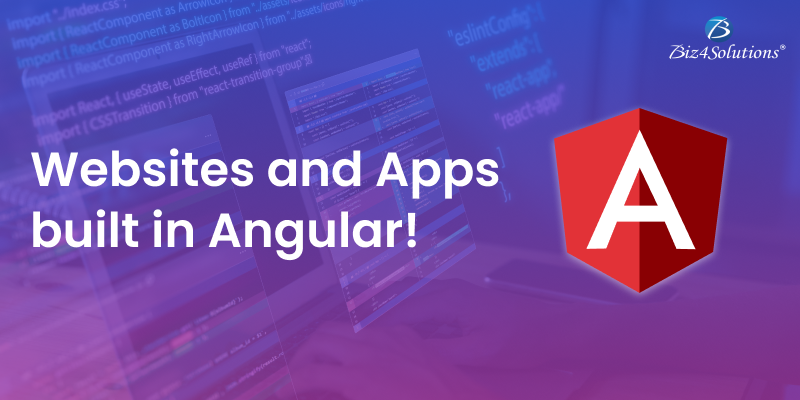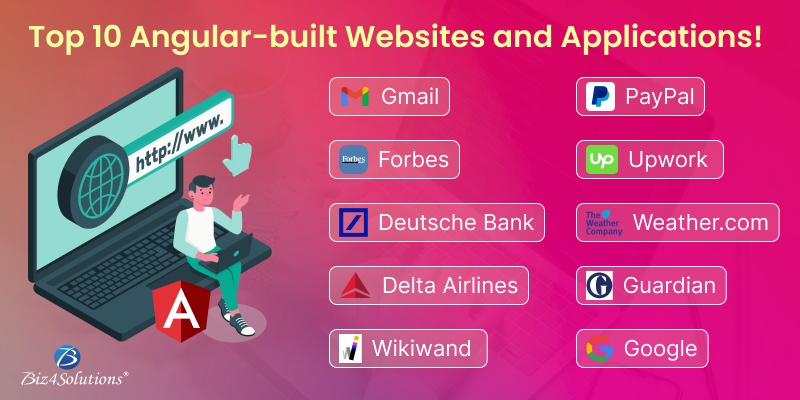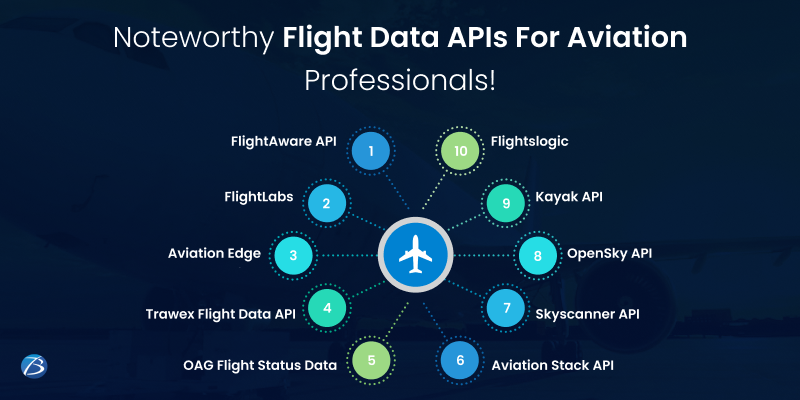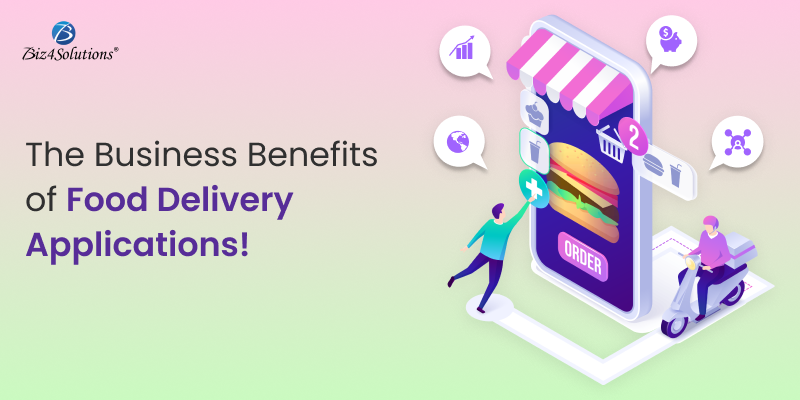
Restaurants were already beginning to recognize the potential of a food delivery mobile app before COVID generated a rise in the online, on-demand economy. After COVID, the trend of food delivery apps for restaurants has skyrocketed. It is mainly due to necessity, convenience, and the upsurge in the habit of getting everything at our doorstep. As a result, it is safe to say that off-premise dining is thriving.
Mobile ordering is the next big thing in a world where every second counts. 80% of restaurants in the United States have already begun to offer their customers the ease of mobile ordering. Many people dislike fiddling with orders over the phone and expect superior customer care. Take the example of rush hours when there are long queues at food joints and customers need to wait for hours. It often leads to customers feeling frustrated or heading elsewhere. This is why, some individuals prefer to stay at home and eat in silence. Given the outrageously growing demand for food, where foodies can get it at any time, it is a great idea to create an online food delivery app that makes it easy and convenient for food lovers to get their favorite food whenever they wish to, regardless of their location.
The online food-delivery business is expected to be worth over 200 billion dollars by 2025. Food apps like Zomato, Foursquare, Swiggy, and Yelp are setting record-breaking revenue records. Food delivery has more advantages than ever before. Online ordering lets you meet the demands of customers effectively, and generate additional revenue while boosting your online presence. A mobile ordering app for restaurants generates additional benefits for your customers, allowing you to rise above other businesses.
So, what are some of the other benefits of a food-ordering mobile app which you have been missing? This post answers them all! Let's find out!
What is a Food Ordering and Delivery App?
A food ordering and delivery application is a mobile app that allows customers to browse menus, place, orders, and make payments for food items from various restaurants or food joints. A food app usually includes user reviews and ratings and shares recommendations to help consumers make informed decisions. Once the consumer places the order, the app notifies the food outlet or delivery partner. The delivery personnel then picks up the food from the eatery and delivers them to the customer’s location.
You can hire a food delivery app developer to create a restaurant food delivery app for you. If you can’t afford it, you can partner with third-party food delivery aggregators. With third-party apps taking care of the expenditure on delivery services, apps, etc., all you have to do is make sure the food is good and available for delivery on time.
Here are some of the key features of a food ordering and delivery app
1. A real-time tracking system
2. Live location visibility to customers
3. Real-time order status
4. Automatic order management for delivery staff
5. Cashless delivery by using automated payment collection methods
6. Powerful analytics dashboards for rapid and easy reporting
Advantages of having a Food Delivery Mobile App for Restaurant Businesses
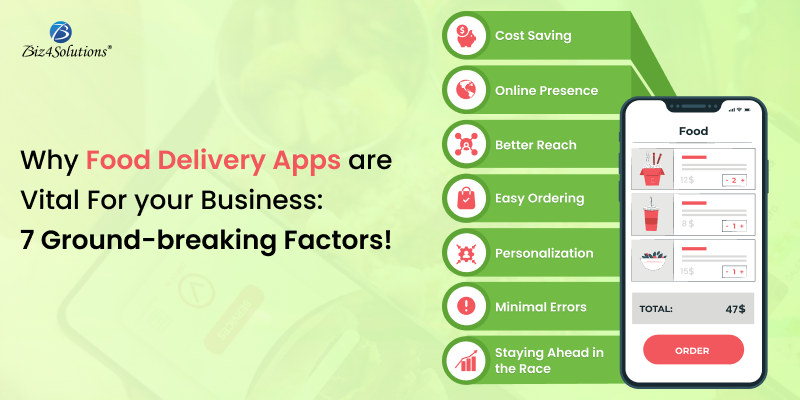
1. Cost Saving
When it comes to costs, there are numerous benefits to using a food delivery mobile application. It will save on the cost of managing operations while simultaneously increasing the sources of income. You no longer need to worry about supply chain management when you collaborate with a third-party aggregator platform like DoorDash, Uber Eats, or GrubHub. Food delivery apps take care of the entire ordering and distribution infrastructure that occurs outside the kitchen.
They will supply the necessary goods, such as insulated hot boxes, as well as transport vehicles. All you need to do is focus on producing high-quality food that people will be tempted to reorder. Also, apart from the initial investment in your restaurant, which includes staff, ingredients, rent, etc., you won’t have to incur any upfront operating costs out of your budget. That means you don’t have to add even a single member to the staff for foreseeing food delivery operations. Uploading your menu on a restaurant mobile app is like having extra staff in your restaurant.
2. Online Presence
Establishing an online presence is a crucial advantage of having a food delivery mobile solution for a restaurant business. A restaurant mobile app can help establish a strong online presence, which can have several benefits for their business.
An online presence can increase the visibility of a restaurant, as customers can easily discover the eatery and order food through the restaurant food delivery app. This will attract more customers and generate more orders, ultimately resulting in higher revenue for the restaurants.
An app can help restaurants build their brand and reputation. By offering high-quality food and exceptional customer service through the app, restaurants can establish a positive image and get positive reviews.
Online visibility can provide valuable marketing opportunities for restaurants. They can use the app to promote their menu, special offers, and discounts, which can encourage customers to order frequently. Besides, a restaurant mobile app can be used to collect customer data and send targeted promotions, which will help increase sales rapidly.
3. Better Reach
Almost everyone is glued to their phone now, so what’s a better way to increase your reach than through food ordering applications? These apps can help customers connect with various restaurants, cafes, food joints, and bars at the click of a button on their smartphones. So, business owners can reach out to their targeted audience quite easily. For instance, Doordash caters to 94% percent of the population in the US, 80% of the population in Australia, and 75% of Canada’s population.
For reaching out to customers, you must provide your audience with engaging material and good content. Social media plays a huge role in this, where restaurants can connect to Facebook and Twitter to advertise themselves. A sound restaurant mobile application comes with additional information, such as working hours, menus, daily specials, contact information, current offers, venue, and so on. But the creators of such a food delivery app development solution have to make sure that while adding all this data and features, you keep the app interface as simple as possible. If there's too much content, the application will look clogged. So, include only the necessary information that will prove handy to your users.
4. Customer-Friendliness and Easy Ordering
People refrain from dining out because they're trying to save time. Your customers prefer to order food online since it is literally at their doorstep. Remember that modern-age consumers use on-demand apps for almost everything and want their service hassle-free and convenient. Hence, the easier the food delivery process, the happier the customer will be, which will result in more customers for you.
Earlier, while ordering over the phone, individuals had issues such as accent problems, noise disturbances, miscommunication, and network issues which would result in erratic orders. This left customers unsatisfied. Now, with food delivery service providers, things are much easier. And if you can provide such an experience, customers will undoubtedly stick with you. So, with an application with an attractive and simple user interface, rewards, and discounts on food, and some customer-centric features; it will be easier for food businesses to allure consumers without breaking a sweat. Some apps even allow customers to select the best dish from a variety of similar cuisines with the help of a predictive analysis tool. This can be an added advantage.
5. Personalization:
Thanks to new-age food ordering apps, it is now possible to run a personalized strategy for a customer. A customer is likely to use the food app more frequently if customization functionalities are there. With the help of a restaurant delivery app development company, you can build an app that can be customized for different users based on their needs and preferences. Such food apps collect customer data such as order history, wish lists, frequently visited restaurants, etc., and use this information to create personalized recommendations. Suppose a customer checks out a food item on the menu but does not order it, an app can send a personalized push notification about that dish to that particular customer only. With an app that supports the multi-lingual feature, you can send notifications in the customer's regional language, to create a personalized experience for them. If a customer has not used the app for a certain period, you can send a text or notification of a discounted offer on their favorite dish, which will encourage them to use the app again.
6. Minimal Errors and Miscommunication
It is often said that even the best chef makes mistakes once in a while, just as an owner can make a mistake while taking an order. Well, a restaurant food delivery application resolves this problem by minimizing the chances of errors. Earlier there used to be problems like miscommunication while ordering on the call, language barrier, and mix-ups between the chef and the person who took the order. Now, this possibility gets ruled out if you choose the online ordering system and let your customers themselves make a choice. By implementing online ordering into the daily operational routines for the company, your team can automate certain processes by conveying specific demands to the software to assign duties. Some examples are accepting orders and sending those orders to the staff in the kitchen.
Food ordering app development companies have made the billing process easier in these apps. The customers get detailed billing with tax, delivery charges, etc. There are no loopholes in billing systems present in mobile apps. Also, multiple payment options have been made available for customers. Food delivery application development firms integrate GPS into the apps to ensure that the delivery person correctly finds out the customer's exact location and delivers the order.
7. Staying Ahead in the Race
Even though, after COVID, a number of restaurants have had their apps developed by a food delivery application development company, there is still a large section of food businesses that have not upgraded themselves. You can take advantage of this scenario and stay ahead of the competition by making your restaurant available on an eatery food delivery app. 60% of American customers place a weekly order for home delivery or takeout. Needless to say, food delivery is more popular than ever before and businesses should capitalize on this trend.
Conclusion:
In conclusion, having a food delivery mobile application for a restaurant business can provide numerous benefits. It can increase sales, improve customer loyalty, and streamline food ordering and delivery operations. With the rise of mobile technology and changing consumer habits, offering a delivery service through an app gives restaurants an edge over their competitors. By utilizing a restaurant mobile application, restaurants can reach a wider range of customers, offer a more convenient ordering process, and provide better customer service.
That does not mean that this approach does not have any cons. Any sort of technology comes with a price. So, keep an eye on your budget before trying to develop a restaurant mobile application. Also, all these apps need to be maintained and updated on a regular basis. However, if planned properly and executed correctly, a food app will bring a lot to the table. Ultimately, investing in a restaurant food delivery app can be a crucial move for restaurants looking to adapt to changing market trends and stay ahead of the competition.
